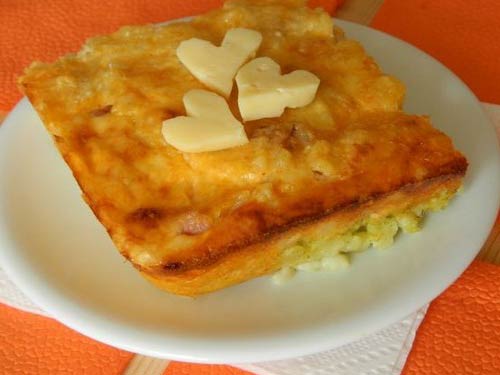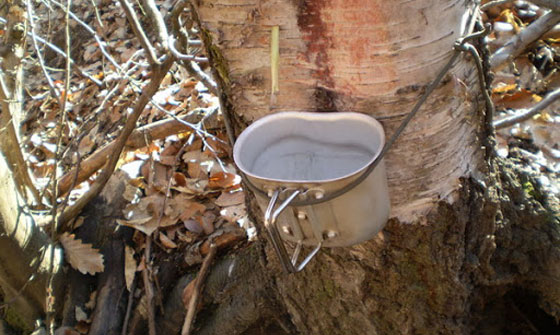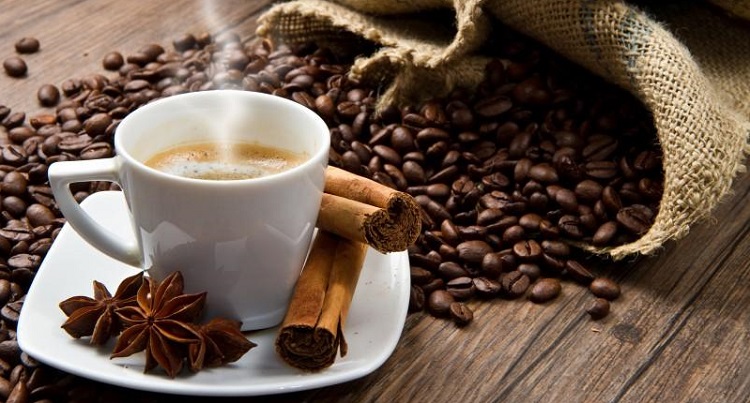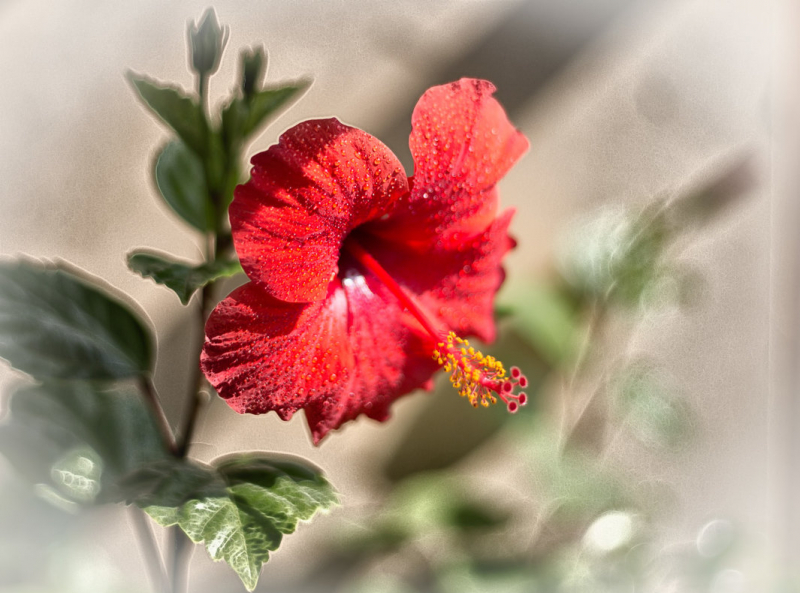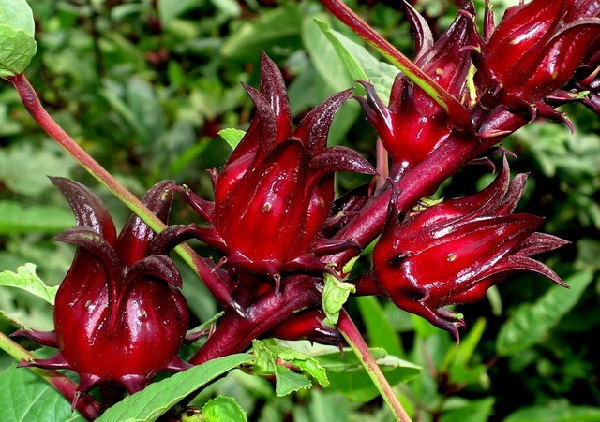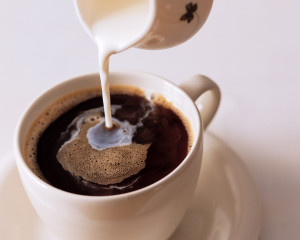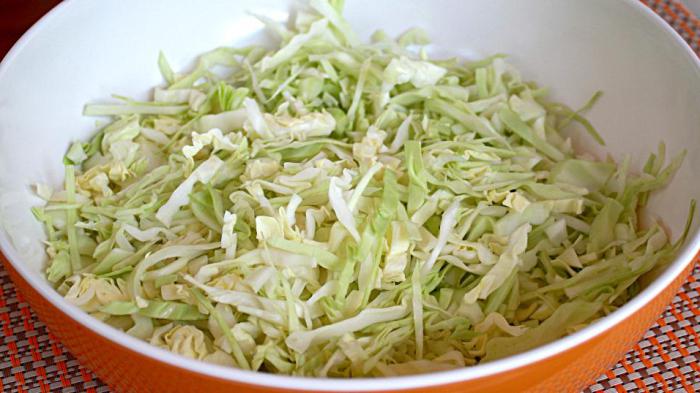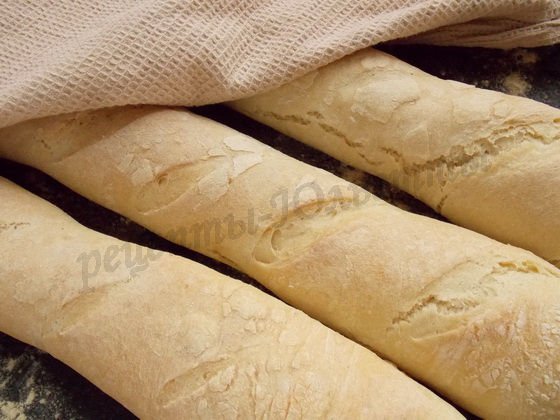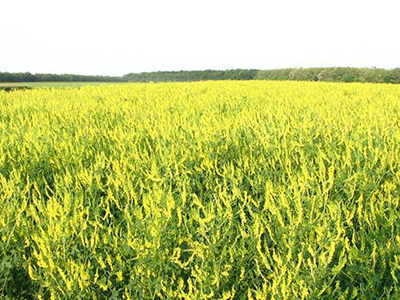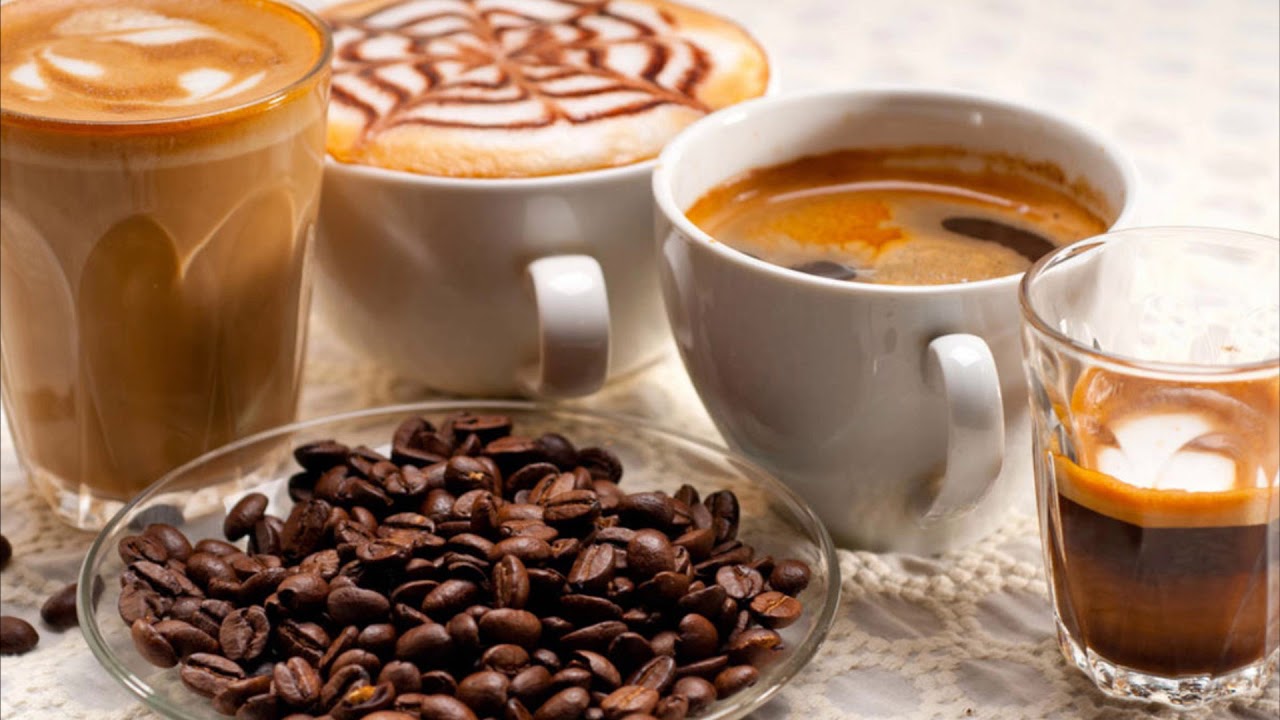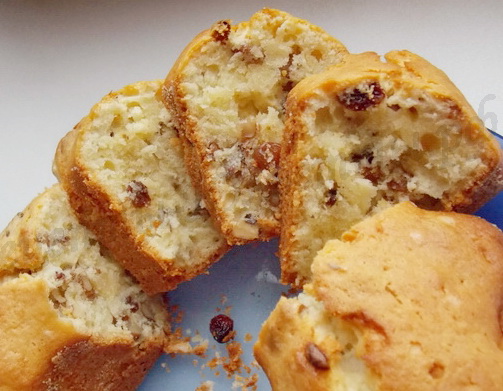Hibiscus tea: properties, benefits, harm and contraindications. Karkade raises or lowers blood pressure? Useful properties of tea
In the heat there is nothing nicer than drinking a glass of cold, sour, pleasantly refreshing drink of a deep reddish-purple hue. This is Hibiscus tea, which has become known and popular with us relatively recently, and has been used in Arab countries for a very long time. This is a great drink that warms you hot in the cool season, and cold - actively eliminates thirst in the most intense heat. The benefits of this plant are due to its rich healing composition.
Hibiscus tea as a tasty drink and medicine
Many people at home grow a beautiful lush plant with large heart-shaped glossy leaves and elegant red flowers. We all know it under the name "Chinese rose" or "rose." In fact, this is one of the varieties of hibiscus - a plant that has many diverse varieties and species. One of these plants is actively grown in North Africa and is the raw material for a very tasty and healthy drink - Hibiscus tea.
For this, the mature petals of this plant are collected and dried in a special way, undergoing fermentation like black tea. As a result of such preparation, the petals do not just dry out for the convenience of their storage and transportation - all the medicinal substances with which this plant is so rich are concentrated in them. The resulting drink has a pronounced sour taste and a very pleasant delicate aroma. The beautiful rich ruby \u200b\u200bcolor of the finished drink also attracts attention. Coloring is provided by special substances - anthocyanins, which have many healing properties. One of them is the ability to stop bleeding and repair damaged tissue.
In addition to the drink, delicious and beautifully colored jellies, preserves, marshmallows and other sweets are prepared from the hibiscus petals. This is due to the fact that the composition of the flowers includes a large number of pectins, organic acids and natural dyes.
Hibiscus contains many substances useful for human health:
- Flavonoids.
- Anthocyanins.
- A complex of vitamins, including vitamin P, which reduces the permeability of blood vessels, strengthens their walls and prevents the development of various diseases of the cardiovascular system.
- Antioxidants in hibiscus contribute to the purification and rejuvenation of the body, inhibit the growth of microorganisms, the formation and development of a variety of neoplasms, including malignant tumors. This drink is successful when taken orally, and with the use of crushed leaves and fresh petals can treat wet ulcers, wounds, eczema, boils, and tumors of various origins.
- A large number of various organic acids contributes to the normalization of metabolism in the body, stimulates and “accelerates” metabolism, helps to fight excess weight. The content of linoleic acid and some other elements helps to fight the formation of cholesterol plaques, thereby protecting the body from damage by vascular atherosclerosis. In addition, the healing composition of Hibiscus tea helps to cope with excess fat, contributing to its removal from the body and not allowing it to “clog” blood vessels and be deposited in the depot.
Hibiscus has a mild antispasmodic effect, helping with colic of various origins, including spasm of cerebral vessels.
This tea also has a diuretic effect. With it, you can cope with edema without harm to the body, as well as slightly lower blood pressure by reducing the amount of fluid in the body.

Karkade raises or lowers blood pressure?
Perhaps the most important healing property of hibiscus tea is its ability to influence blood pressure.
It is believed that drinking hot hibiscus can raise the level of pressure, and a cold drink successfully reduces it.
- Tea to relieve pressure
Karkade is able to smoothly lower the pressure, therefore, in the absence of contraindications, it can be drunk regularly and for a long time, while constantly monitoring the pressure level so as not to “bring down” it to too low a level.
If we ignore the healing properties of hibiscus, then we must note its wonderful taste and aroma. Brewed like regular tea, hibiscus can be successfully warmed in the winter and just as effectively refreshed in the summer. It can be served as a separate drink or introduced into various cocktails, for example, adding it to fresh or too sweet juices, ordinary black tea. In hot weather, hibiscus is drunk with ice, and as an alcoholic cocktail it makes a good pair with rum and red wine, spices, lemon and lime. Its rich taste and beautiful juicy color gives a wide field for a variety of experiments.

Contraindications
- Since hibiscus has the ability to influence the level of blood pressure, people with “jumping” indicators should drink this drink with caution, especially hypotensive patients suffering from arterial hypertension with very high rates and pressure instability.
- This drink is not recommended for patients with stones in the gall bladder and suffering from urolithiasis. This precaution is caused by the fact that tea has a diuretic and choleretic effect and can provoke the movement of stones, which will lead to their blockage in the ureters or biliary tract. This can cause severe colic and can lead to surgery. With healthy kidneys and gall bladder without stones, the liver, the drink is only useful, it eliminates the possible stagnation of bile and prevents the formation of sand and stones.
- Pregnancy is a contraindication for drinking hibiscus, since the drink can affect the course of pregnancy, overly toning the uterus. Hibiscus can affect sexual function, so drinking it can be risky while carrying a baby.
- The drink from the hibiscus petals is acidic, it contains a lot of different acids, except oxalic, so it is not taken with gastritis with high acidity, as well as with peptic ulcer.
Karkade for weight loss
To lose weight, it is recommended that you add regular Hibiscus drinking for 2 to 3 weeks in a row to sports and diet, then take a break for a week and again take a ten-day course. This drink will help get rid of edema, saturate with vitamins and remove excess fat. If you also add jelly from hibiscus to the menu or eat brewed petals from tea, the effect of hibiscus can be enhanced.
Quick article navigation:
Composition and calorie content
Per 100 g of dry hibiscus:
- Calories - 37 kcal
- Proteins - 0.43 g - 1%
- Fats - 0.65 g - 1%
- Carbohydrates - 7.41 g - 2%
- Dietary fiber - 0.3 g - 1%
Vitamins:
- B1 - 1.28 mg - 85%
- C - 18.4 mg - 31%
- B2 - 0.099 mg - 6%
- A - 296 IU - 6%
Minerals:
- Iron - 8.64 mg - 48%
- Copper - 0.073 mg - 4%
- Zinc - 0.012 mg - 1%
The percentage of daily requirement (NI) for an adult who is balanced on a meal of 2000 kcal per day is indicated in%.
So, the drink is poor in calories, fats and carbohydrates. He does not complicate the diet for weight loss. At the same time, it is rich in vitamins, minerals and active bio compounds, which we will discuss below.
TOP-12 useful properties of hibiscus
The benefits of vitamins and minerals.
Here are some vitamins in hibiscus in tangible concentration.
- Vitamin C. It strengthens the immune system, softens the manifestations of allergies and is a powerful antioxidant.
- Iron. Without this element, the cells of the body cannot receive life-giving oxygen. However, do not "treat anemia" with a beautiful infusion: iron is poorly absorbed from any plant sources.
- Vitamin B 1. Reduces protein glycation, which heals at the heart of systemic senile inflammation, and is extremely important for nerve tissue. It bears the funny and well-deserved name “optimism hormone”.
Present in lower concentrations of vitamins B2, A, copper and zinc are important for healthy eyes, skin and brain function.
Snack recipe with oncology protection.
If you add 2 more elements to vitamins C, A and zinc - vitamin E and selenium - then you can get a full range of nutrients to strengthen immunity. For example, a glass of tea and a handful of nuts, where there is 1 Brazil nut - a healthy snack in the middle of the day.
The main therapeutic effects are associated with action complex anthocyanins. It is they who color the drink in dark red. The infusion also contains significant amounts of organic acids (15-30% by weight of dry raw materials) and.
Unfortunately, there is still no comprehensive large-scale study that would accurately assess the benefits and harms of hibiscus tea. However, according to information for today, a rich infusion should be considered a very useful tea.
How it affects pressure and what time to drink
Oh, this many-sided Internet and a repeating list of questions that have grown from scratch. Does hibiscus tea lower or increase blood pressure? Is it cold or hot to drink? Does the effect depend on the time of administration?
- Remember the truth! Hibiscus lowers blood pressure (both systolic and diastolic), thereby protecting the heart and blood vessels. That is, both the first and second digits after measurement become lower.
- Note! Sometimes you have to read a myth about the different effects of infusion on pressure when it is hot or cold. However, there is no scientific evidence for this information.
If you want to relieve pressure, rely on your taste. The effect is the same at any temperature: the pressure will decrease.
Folk rumor that hibiscus "increases pressure" is mistaken due to the wrong time for taking tea. For the sake of tradition, people have tea after a hearty meal of heated dishes. A lot of hot food pushes pressure up, but hibiscus has nothing to do with it.
In order not to fall into the trap of erroneous traditions, consider two rules for hypertension, how much and at what time to drink hibiscus.
- It is beneficial to drink tea to reduce pressure. 4-5 times a day, in small portions, between meals or 20 minutes before it.
- For a day - no more than 1 liter, where up to 2 tbsp. spoons of hibiscus petals.
Antioxidant to help the immune system
The hero of the review is a powerful antioxidant solution due to the combined action of vitamin C, anthocyanins and other bio compounds.
In experiments conducted on mice, the addition of hibiscus extract to the feed stimulated the production of antioxidant enzymes by 92%.
It is worth remembering that a diluted drink (and we drink it) has a weak effect in comparison with a concentrate. It is naive to expect a therapeutic effect with an already developed disease.
American doctor and popularizer Michael Greger considers the antioxidant effect of hibiscus to be short-lived. Within 1 hour after drinking tea from Sudanese roses, the level of antioxidants in the blood returns to normal.
Cancer Polyphenols
In experiments in vitro, the anti-cancer effect of the polyphenols contained in the petals of a Sudanese rose was discovered. Our hero also has antibacterial properties. But studies on the benefits and harms of Hibiscus tea for cancer patients have not yet been conducted.
Improves lipid metabolism
Our hero increases the level of "good" cholesterol in the blood. There is also reason to believe that Sudanese rose tea lowers “bad” cholesterol.
In experiments on rats and hamsters, it was found that Sudanese rose extract protects liver cells from the accumulation of fat. However, the effect of tea on the human liver has not yet been investigated.
Diuretic and laxative
The infusion of ruby \u200b\u200bpetals improves digestion, is a soft urinary and choleretic, helps fight constipation thanks to vitamin C, potassium electrolytes and the flow of additional fluid into the body.
The benefits of losing weight
Our hero can stimulate the loss of adipose tissue and protect against gaining excess weight. This effect has only a “pure” infusion without carbohydrate sweeteners. Sugar or honey - empty "fast carbohydrates", which nullify the useful properties of hibiscus for weight loss.
The fat burning effect occurs due to amylase inhibitors, including phaseolamine. They reduce the absorption of fats and carbohydrates (). At the same time, diuretics and laxative bonuses and harmonization of metabolism are present on a diet accompanied by a ruby \u200b\u200bdrink.
What is useful hibiscus for women
In addition to contributing to weight loss and general cancer prevention, our hero brings other benefits to women's lives.
- A delicious infusion helps alleviate anxiety and depression. ()
- Hibiscus tea stimulates the outflow of blood and relieves cramping during menstruation.
- Recipes of cosmetics for personal care at home is beneficial to diversify dry hibiscus powder. Grind the petals on the coffee grinder and add moisturizing and toning masks to the coffee scrub.
- Cold infusion will appeal to those who like to wash their face with ice cubes in the morning.
- Toner for oily and combination skin can be done very simply. One teaspoon with a slide in a glass of water with a temperature of not more than 50 degrees Celsius.
Contraindications and possible harm

The disadvantages are the continuation of virtues. This is also true for tea from Sudanese roses.
- Because hibiscus lowers blood pressure, it is best avoided by hypotensive patients - people suffering from constantly low blood pressure. Recall hypotension figures: below 100/60 mm Hg. Art. for men and 95/60 mm RT. Art. for women. Otherwise, from a cup of beautiful infusion you can get weakness and dizziness.
- An allergy to a delicious infusion is not uncommon. The main manifestations are redness and itching in the eyes, nasal congestion, dry throat.
- Exclude the drink with acute cholecystitis and pancreatitis, with kidney stones and gall bladder.
- Drink with caution with increased acidity of the stomach, especially on an empty stomach.
- Some people noted that after drinking they had a feeling of intoxication and even a hallucination. This is a rare and atypical reaction, but if you have never tried this product before, do not taste it before you drive or engage in hazardous work.
Is it possible to pregnant hibiscus tea? Our hero can stimulate uterine contractions. It should not be drunk during pregnancy.
A 2013 study showed that very large doses of Hibiscus extract can be harmful to the liver. () Be careful with pure extract supplements.
Drug Interactions
- If you take diuretics (in particular, hydrochlorothiazide) and drugs to lower blood pressure, our hero can enhance their effect.
- It cannot be combined with antipyretic agents based on paracetamol. The diuretic effect leads to an accelerated elimination of paracetamol from the body.
- There is evidence that the infusion can weaken the effect of chloroquine, an agent used in malaria.
How much can you drink per day
The average dose for an adult is up to 3 glasses of moderately strong tea per day, evenly distributed, preferably between meals.
According to a study conducted in 2013, significant volumes of manganese and aluminum are present in hibiscus, which can be toxic. () Harm grows with boiling time.
- The authors of the study do not recommend giving drinks from hibiscus to children under 6 months of age.
- Adults should not drink more than 1 liter per day, and children should not drink more than 0.5 liters.
- The dose is calculated for a moderate concentration of the drink: per 1 liter of water, up to 1.5-2 tablespoons of raw materials with a slide.
- Method of preparation: cold infusion or a single pour of hot water for 5-7 minutes.
How to brew hibiscus tea correctly
Cold infusion per night
The perfect cooking option to preserve vitamin C and healing polyphenols.
Pour 1-1.5 tablespoons of dry material (with a slide) into a liter jar, fill it up with water and leave it overnight. By morning, the drink will be ready.
Quick recipe in boiling water
For 4 glasses of tea we need:
- Water - 800 ml
- Sudanese rose petals - 1 tbsp. spoon with / without slide
Brewing is very simple. Fill dry petals with 4 cups boiling water. We insist until a dark red color appears.
We drink the drink hot or cold - like a beautiful lemonade with ice cubes. To taste, add citrus slices, fresh mint leaves, a pinch of cardamom to the drink.
Sugar and honey - only for those who are not harmful to fast carbohydrates. Most people who are already looking for recipes for healing through food, it is better not to sweeten drinks.
Hibiscus tonic
 It is beneficial to combine hibiscus with other healthy foods.
It is beneficial to combine hibiscus with other healthy foods.
- , cardamom, lemon, berries, rosehip, green tea, apple, orange or pineapple juices.
Experiment by adding everything you value and love to a ruby \u200b\u200bsolution.
In summer, based on the infusion of hibiscus, you can make interesting cold soups and colorful lemonades.
Now it’s easier for you to sort out whether it is worth drinking hibiscus tea. Useful properties and contraindications have been studied from different sides, and a pleasant sour taste and beauty deserve attention. We include it in the menu from time to time, insisting in a cold way, and make healthy drinks on its basis.
Health is delicious, and a taste for life is great!
P.S. Sources.
Research at PubMed; https://nutritionfacts.org; http://www.khealthmatters.com.
Thank you for the article (8)
Most of us are familiar with the pleasant and slightly sour taste that Hibiscus tea has. This magnificent drink with a light floral aroma differs from other teas in its rich red tint.
Hibiscus tea composition
As a raw material for the production of this delicious drink, hibiscus is used. Modern biologists know about 150 varieties of this plant, among which there are not only perennial shrubs, but also annual herbs. Hibiscus grows on the territory of such countries as Mexico, Sri Lanka, Thailand, India, Sudan, Egypt and China. In each of these countries there are extensive plantations of this plant, on which a huge number of people work.
Those who want to know the beneficial properties of Hibiscus tea and the contraindications for which it cannot be drunk will be interested in the chemical composition of this drink. Due to the fact that exclusively natural raw materials are used for its production, it contains a huge amount of useful vitamins and amino acids. This drink is considered an excellent source of anthocyanins, antioxidants, organic acids, flavanoids, polysaccharides and pectins. Due to its vast chemical composition, red is widely used in Arab medicine. For example, the malic, citric and tartaric acids contained in it have good disinfectant and anti-inflammatory properties.

The healing properties of the drink
Those who are interested in what are the contraindications to its use will not hurt to find out that it is known for its antitumor effect. Hibiscus petals contain a huge amount of natural antioxidants that reliably protect the human body from the negative effects of free radicals and significantly reduce the risk of malignant neoplasms.
The anthocyanins contained in the drink not only give it a rich red tint, but also have a beneficial effect on the blood vessels, regulating their permeability and strengthening the walls. Regular consumption of this tea, rich in riboflavin, niacin, vitamins A and C, helps to improve overall well-being and helps to resist colds.

People who care about the beneficial properties of hibiscus tea and contraindications to it, must certainly know that it is not recommended for those who suffer from gastritis, peptic ulcer and urolithiasis. In addition, some may have an individual intolerance to this drink. Therefore, it is not worth drinking for those who are prone to allergic reactions. Many people like to drink aromatic hibiscus tea in the morning. What time is better to drink this drink, experts will prompt. In their opinion, it should not be consumed on an empty stomach.

Is this drink effective for weight loss?
Only a few of those who know the beneficial properties of Hibiscus tea and the contraindications to its use know that with this drink you can quickly lose a few extra pounds. It contains a sufficient amount of acids that contribute to the dissolution of fats, the removal of excess fluid and increased metabolism in the intestine. Due to the presence of a mild laxative effect, it gently and absolutely safely cleanses the intestines.
The slimming scheme using hibiscus is quite simple. To do this, you need to drink 200 ml of this aromatic invigorating drink for three weeks one hour before a meal. After this period, it is recommended to take a ten-day break and repeat the course again. Of course, during this period, you must completely exclude cakes and fast food from your daily diet. To enhance the effect, it is recommended to do gymnastics and adhere to a sparing diet.

Hibiscus tea increases or decreases blood pressure?
Most lovers of this drink are of the opinion that hot tea helps increase blood pressure, and cold tea, on the contrary, lowers it. Recent scientific research has refuted this claim. Is it important for everyone who loves this drink to know about this? In fact, regardless of the degree of heating, red tea still lowers blood pressure. This is due to the fact that it has an antispasmodic, anticholesterol and diuretic effect. A few years ago, Americans conducted a scientific experiment that vividly proved this theory. The study involved 70 volunteers suffering from hypertension and belonging to different age categories. For six weeks, they all consumed several cups of Hibiscus daily. By the end of the experiment, all of its participants had a persistent tendency to lower pressure.

How to brew hibiscus?
Brewing this drink is not much different from other teas. In a glass with several grams of Sudanese rose petals, boiling water is poured and sugar is added. In the summer heat, you can drop a few ice cubes into the drink. To date, Egyptian technology for brewing this tea is especially popular. To do this, take one tablespoon of dried flowers of Sudanese roses, pour them with chilled water and leave to infuse for several hours. After that, the dishes with the liquid are placed on the stove and boiled over low heat for 4-5 minutes. Then the liquid must be filtered and, if desired, add sugar to it. The resulting drink is equally good both in hot and in cold form.

How to make red tea, retaining all the beneficial properties?
This can be done using the so-called cold method. A glass of dried hibiscus flowers is poured into eight glasses of cold boiled water and infused for several days. The readiness of the drink can be judged by its color. Tea should acquire a red tint. After this, you can strain the infusion and, if desired, add sugar to it. Tea prepared in this way can be served not only in cold but also in warmed form. Such a drink can be stored for a week. During all this time, all useful substances are stored in it.
Those who wish to maintain the maximum amount of valuable properties of this drink can be advised to brew it with cold water. Under the influence of too high temperatures, hibiscus leaves waste the bulk of their healing properties. To get a truly tasty drink, you need to insist it for at least an hour. It is strictly forbidden to cook this fragrant and healthy tea in a metal bowl. For brewing, it is better to use porcelain, ceramic or glass containers. This will preserve the taste and color of the drink. Of particular benefit is the regular use of red tea, brewed in its natural form, without the addition of flavors or sweeteners.
Those who prefer to drink a truly healthy and tasty drink are advised to refuse to purchase whole dried petals packaged in regular packs.
Hibiscus tea: reviews
Most people who regularly drink this unusual aromatic drink, speak about it exclusively in a positive way. Some young ladies claim that it was red tea that contributed to dulling hunger that helped them get rid of a few extra pounds. He helps someone normalize blood pressure and solve other health problems. Some women use frozen cubes of red tea to wipe their faces. They claim that it helps smooth wrinkles and tighten the skin. And someone appreciates this drink for its unique aroma and unique taste with a slight acidity. In hot summer days, a cup of chilled hibiscus becomes a real salvation from the sweltering heat, perfectly refreshes and tones the body.
Probably not a single person left on the planet who would not hear about aromatic ruby \u200b\u200bdrink made from and called hibiscus tea. This tea is interesting not only by the unusual history of its appearance, but also by the manifestation of its amazing beneficial properties, and in some cases by contraindications.
The history of the drink
The history of the drink says that for the first time they tried to brew Sudanese rose in ancient India - the people of this country very quickly appreciated the high palatability of hibiscus tea, its ability to quench thirst on hot days, as well as quickly charge a person with energy and relieve fatigue. After such an excellent “discovery”, Hibiscus very quickly gained fame and spread rapidly in Egypt and Sudan, where it received another beautiful name - "Drink of the pharaoh."

Nowadays, Sudanese rose is grown in many southern countries, including Thailand, Sri Lanka, China, Algeria, Mexico and many others. The color and taste of the drink obtained depends on the specific place of its growth, in Thailand tea is made purple and sweet, in Egypt - sour with a rich cherry hue, and in Mexico - brackish and orange.
Did you know?In Malaysia, hibiscus flowers are considered a symbol of the country, and the five red petals of the Sudanese rose symbolize the five commandments of Islam.

What is useful
It is interesting that conflicting hibiscus tea can bring both benefit and harm to women and men, but we will start with it, perhaps positive qualities:
- beneficial effect on the digestive system;
- possesses antibacterial properties;
- removes toxins from the body;
- cleanses the liver and promotes better production of bile;
- perfectly quenches thirst in the hot season;
- lowers bad cholesterol;
- relieves hangover;
- prevents the growth of cancer cells;
- additionally used as an anthelmintic;
- relieves insomnia and neurotic conditions;
- thanks to the vitamins and minerals contained in the composition, it significantly strengthens the immune system and relieves any kind of stress.

Important!To the repeatedly asked question aboutlowers or still increases blood pressure hibiscus tea, the answer was given by doctors. According to their conclusion, those substances that color tea in scarlet color, have a therapeutic effect on blood vessels, strengthening them. Fortunately for hypertensive patients, this helps lower blood pressure.
Contraindications and harm
Unfortunately, the drink, which in Arab countries is called nothing more than a “cure for all diseases”, can cause harm to humans, therefore, people with these problems tea is better not to drink:
- gastritis, accompanied by increased acidity;
- with severe hypotension;
- peptic ulcer;
- gallstone or urolithiasis;
- frequent allergic reactions.

How to make tea
Hibiscus tea has a memorable taste, and its rich ruby \u200b\u200bcolor cannot but please the eye, but in order to achieve the correct result in preparation, you need to know how to brew this drink. There is nothing complicated in the process: in order to prepare yourself a portion of red tea, you should take one teaspoon of hibiscus petals and pour them with a glass of boiling water, insisting after that for 5-10 minutes; sugar can also be added to taste. You can use the prepared drink both hot and chilled, adding an additional ice to the glass. It is important to remember that for the cooking process, you must follow some unchanged rules:
- Raw materials for making tea should be only large-leafed, necessarily dried and in no case ground into powder;
- For brewing, only ceramic dishes should be used, as metal utensils can spoil the taste and color of the drink.

How else is used in cooking
Optional petals used in cooking. They are often added to vegetable salads, as well as to meat and fish dishes. In addition, from the flowers it is quite possible to cook useful
Important!It should be remembered that tea from Sudanese roses can be consumed in an amount of not more than three cups per day, since this drink dilutes blood well and, as a result, increases the load on the heart.

Use in Dietetics
In addition to other positive qualities, hibiscus tea has another significant advantage for the fair sex - the fact is that it is often used in dietetics as very effective means for weight loss. Specialists who have made such an important discovery, advise lush women to drink a drink for two to three weeks in large enough quantities. The method, of course, implies some effectiveness, but at the same time it is somewhat hazardous to health, because drinking several cups of brewed hibiscus petals per day can cause serious “overload” of the body and lead to disruption of the kidneys and digestive tract.
Application in cosmetology
The petals of Sudanese roses, combining beauty and usefulness, are also widely used in the cosmetology industry - they are added to a variety of regenerating and anti-aging creams, shampoos, bath foams and even expensive perfumes. 
To prepare a good and useful hibiscus remedy for use at home, you need to turn to several interesting recipes:
Recipe 1. Get Rid of Blackheads
1 tablespoon of the petals is poured with a glass of boiling water, then the resulting liquid settles for about 1 hour. After this time, the tincture should be filtered and poured into an ice container (in cubes). The capacity is stored in the freezer for a long time. Obtained frozen cubes need to be cleaned every day, a noticeable positive effect will be visible after two days.
Recipe 2. Get rid of swelling under the eyes
To do this, you need to brew a very strong decoction of the petals. After that, the material itself is not thrown away, but invested in gauze and applied to the eyelids for 20 minutes. The broth can be used simply as a drink.
Hibiscus has been known since the time of the Pharaohs. This wonderful and fragrant tea made from the petals of a hibiscus plant or, as it is also called, "Sudanese rose" for its resemblance to a large bright rose, is extremely useful for our body. This plant is known for its powerful antioxidant and stimulating properties, so that the drink fills the body with energy and retains youth.
Hibiscus mainly grows in the warm southern countries (Egypt, Sri Lanka, Java, China, Thailand, Mexico). There are about 100 different varieties of this plant. Most of all, this plant likes a humid tropical climate, thanks to which the plant gives a rich harvest. Hibiscus tea has a sweet and sour taste, this drink is especially popular on hot summer days, as it can be prepared both in cold and in hot form. Hibiscus tea is considered a national drink in Egypt. This drink is very popular in hot eastern countries.
It is widely believed that hibiscus is like tea, although it is not made from tea leaves, therefore, it is not. Besides the fact that hibiscus is an excellent refreshing drink, it also found its application in cooking.
The benefits of hibiscus tea.
The hibiscus plant has a number of useful properties. It contains a huge number of vitamins, minerals and acids necessary for a person to maintain vitality. People have learned to use not only the leaves of this wonderful plant, but also green shoots, foliage and seeds. Seeds, for example, are a great addition to soups, and they are also boiled like coffee beans. The green part of the plant is used as an ingredient for salads. Hibiscus petals can also be used for making wine, puddings, jellies, ice cream syrups, cakes, etc. the roots of this plant are used as raw materials for the manufacture of musical instruments such as pipes. Scientifically proven that Hibiscus tea has a number of healing properties.
In its composition, it contains anthocyanins - special substances in which it is concentrated in large quantities of vitamin P, responsible for the normalization of pressure and the state of blood vessels. Therefore, with high blood pressure it is recommended to drink hibiscus tea in hot form, at low pressure, on the contrary, in cold. Hibiscus is allowed to use even during pregnancy.
The drink from the hibiscus petals is enriched with antioxidants that have a rejuvenating effect. They protect the body from the effects of free radicals, thereby preventing the onset of malignant and benign tumors.
Hibiscus tea is an excellent antipyretic, in addition, it is known for its diuretic properties. Sudanese rose is a good antispasmodic. The leaves of this plant contain an invaluable substance - quercetin, which eludes the influence of known anthocyanins on our body. These components are powerful stimulants to cleanse the body of toxins and toxins and its toning. Plus, due to the influx of bile, the ability of the liver to resist various diseases is significantly increased, and its walls and protective functions are strengthened. As a result, the immune system is strengthened and metabolism is improved.
Hibiscus tea is effective as a prophylactic for colds. In addition, this miracle drink helps lower blood cholesterol, is a means of protection against the toxic effects of alcohol, is an excellent antiseptic and has an antibacterial effect.
Hibiscus tea has a healing effect on the body as a whole, it perfectly eliminates any inflammatory processes that occur within the body, alleviates pain, and improves digestion. In addition, it has a beneficial effect on the entire gastrointestinal tract. In addition, the use of this drink improves mood, solves the problem of lack of appetite, and is a sedative that improves sleep. Hibiscus tea can be used as a medicine for the pancreas. This healing drink saves from migraine attacks, hangovers, lowers the temperature, etc.
It also helps the body cope with problems amid stress, nervous breakdowns, and mental stress.
For the proper preparation of hibiscus tea, pour the boiling water over the petals of a Sudanese rose and let it brew. All! You can enjoy a fragrant drink, and at the same time be treated.
To brew a drink, it is best to use glass or porcelain dishes. In no case should you use metal utensils, as it will spoil the taste of the drink. You can also not cook hibiscus, otherwise instead of ruby \u200b\u200binfusion you will get useless muddy liquid.
Contraindications to the use of hibiscus tea.
This tea has practically no contraindications. But still, people suffering from peptic ulcer and other stomach problems should not drink such a drink, because hibiscus increases the acidity of the stomach. It is also worth refraining from drinking to people who have urolithiasis and gallstone disease. In addition, in case of individual intolerance to hibiscus, it is also not recommended to drink this drink in order to avoid the occurrence of allergic reactions.
And remember, in spite of all the advantages of this healing drink, it is necessary to observe the measure in everything. Do not get carried away with hibiscus tea and drink it in large quantities.

